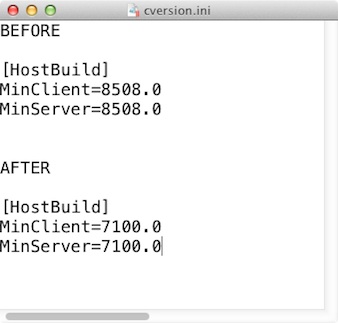Users of Windows 8 Release Preview can do a full upgrade to the final code, something Microsoft said was impossible, an IT consultant said today.
Microsoft has been clear that the Windows 8 previews were a dead end.
"There is no upgrade path from Windows 8 Consumer Preview or Windows 8 Release Preview to the Released-to-Manufacturing (RTM) version of Windows 8," Microsoft said in an FAQ posted on the company's TechNet support site. "If you have already installed Windows 8 Consumer Preview or Windows 8 Release Preview, you will be required to perform a clean install. The installation process will automatically create a 'Windows.old' folder that contains all files from your Windows 8 Consumer Preview or Windows 8 Release Preview installation."
A "clean" upgrade is the least effective migration, since it does not retain applications, user accounts and settings, and moves data files -- Word documents and Excel spreadsheets, for example -- to a special folder.
A Windows 7-to-Windows 8 upgrade, on the other hand, preserves virtually everything, from programs and user accounts to Windows' settings and files stored in default locations.
Denny Cherry, a senior database administrator, independent IT consultant and as "Mrdenny," a blogger for the IT Knowledge Exchange, recently posted instructions on how to fool Windows 8 RTM into upgrading the sneak peaks Microsoft offered users earlier this year.
The workaround -- which relies on editing the "cversion.ini" file in a downloaded copy of Windows 8 RTM -- tricks the installer into accepting upgrades from February's Windows 8 Customer Preview and May's Release Preview.
"Cversion.ini tells the installer the minimum build it can overwrite," said Cherry in an interview Tuesday. "By changing the version number there, it's allowed to overwrite the previews."
The cversion.ini file is only used to block previews of the final operating system; changing it does not affect the ability of Windows 8 RTM to upgrade Windows XP, Vista or Windows 7.
Cherry wasn't the only one who remembered that the same trick had worked three years ago when users wanted to upgrade from Windows 7 Release Candidate to the 2009 OS's final code.
Jason Fay gave the same advice as Cherry on his blog, and said he was able to upgrade Windows 8 Release Preview to the RTM bits without problems.
But he did have one caveat. "Keep in mind that this is not supported, and could end up with a catastrophic failure if some bits are not properly upgraded," said Fay. "But 12 hours in, and things seem stable."
Cherry said his upgrades were identical to those promised by Microsoft for Windows 7 users. "It's a traditional upgrade [that retains] all the settings and applications," he said. The only glitch he encountered was with Cisco's VPN Client, which required reinstallation on Windows 8 RTM.

Changing the numbers in one file of the Windows 8 RTM installer lets users upgrade from Windows 8's free previews.
Although Cherry did not test the upgrade trick with a copy of the Windows 8 Enterprise 90-day trial, he expected that would work just as smoothly as to a perpetual license of Windows 8, like those Microsoft released last week to TechNet and MSDN subscribers, and to enterprises with Software Assurance plans in place.
Because the Windows 8 previews will expire on Jan. 15, 2013, users who want the longest free ride can wait out the next five months with Release Preview, then -- assuming the free eval is still available -- upgrade to the trial next January for three more months of use.





